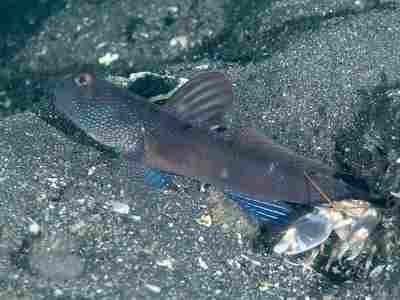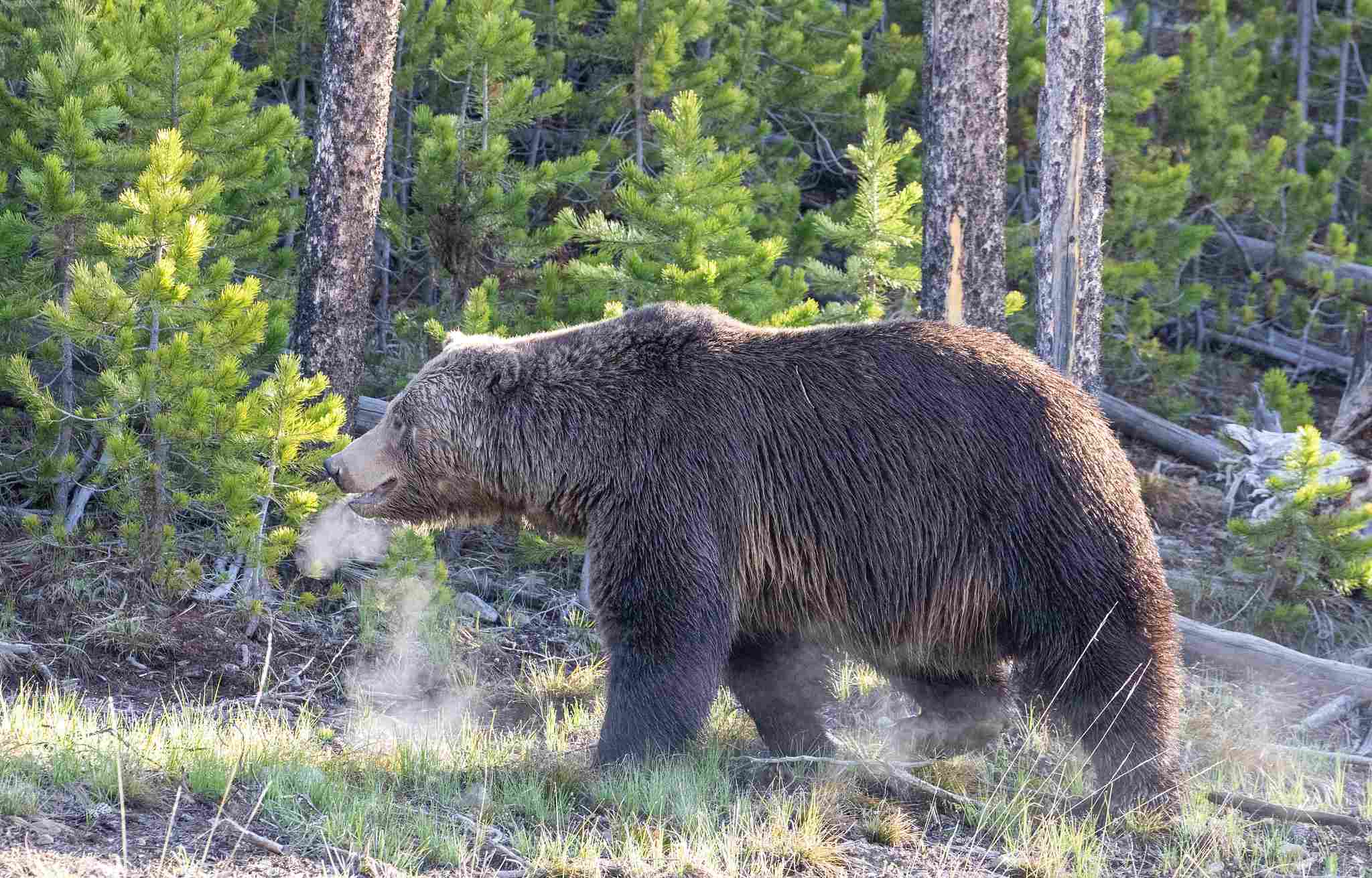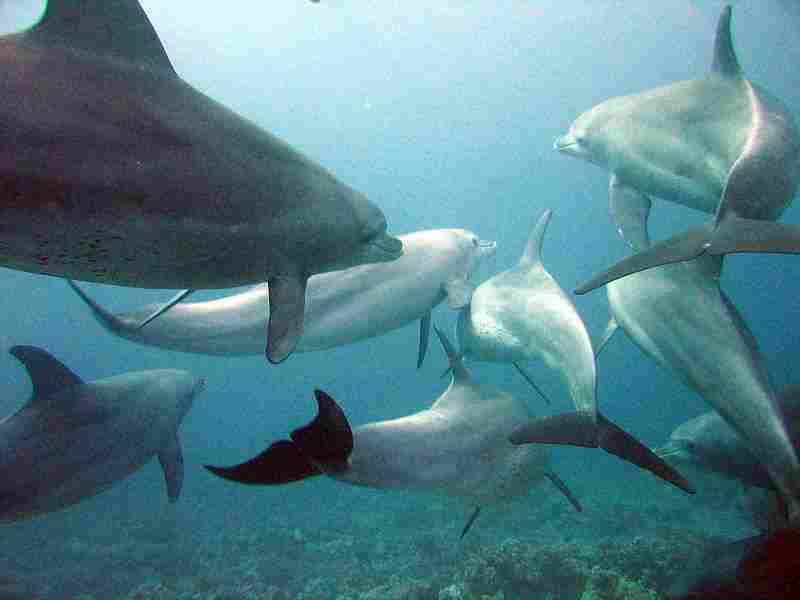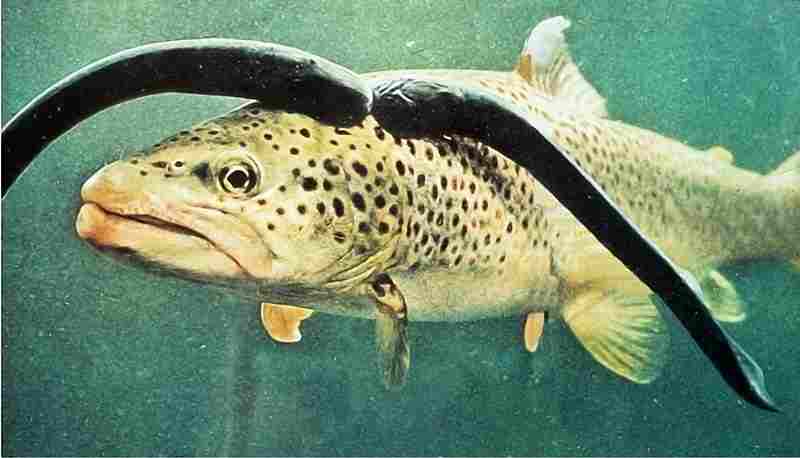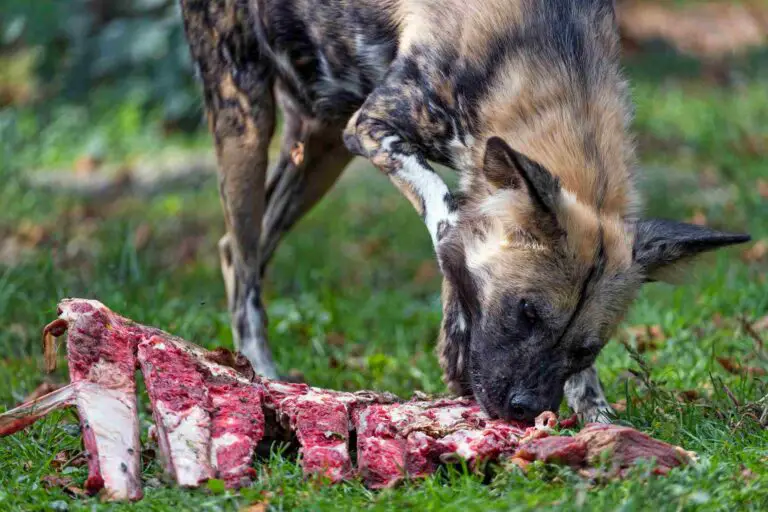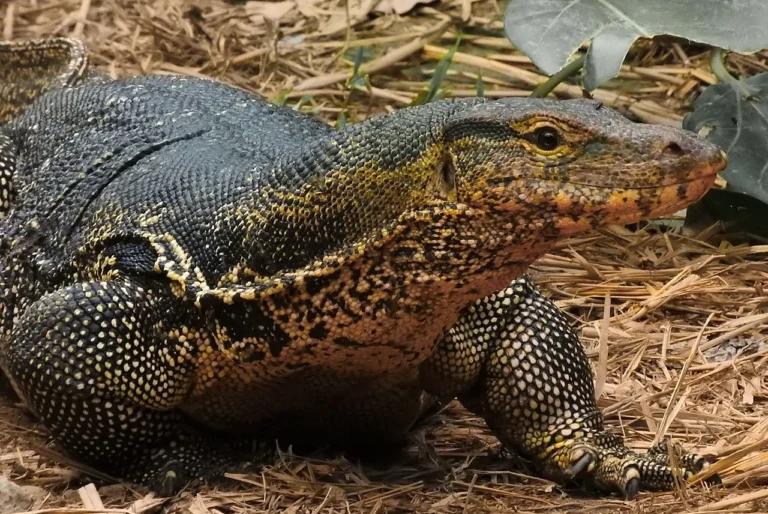11 Estuary Biotic Factors and Their Characteristics
Estuary biotic factors include; autotrophs, herbivores, carnivores; omnivores, decomposers, mutualism; commensalism; parasitism, competition, predation, and organic adaptation.
This article discusses estuary biotic factors and their characteristics, as follows;
1). Estuarine Autotrophs (as one of the Estuary Biotic Factors)
Autotrophs, also referred to as primary producers, are important biotic factors in estuarine ecosystems, that contribute to the sustainability of their biome by harnessing solar energy in the form of sunlight, or utilizing certain chemicals to produce energy-rich biomass.
Their contribution to the estuary is multifaceted, and pivotal for the balance and productivity of these dynamic habitats.
Contribution of Autotrophs to the Estuary Ecosystem
Contributions of autotrophs to the estuary include bioenergy provision, carbon sequestration, food web sustenance, oxygen cycling, nutrient dynamics, and habitat management/modification.
By reason of their photosynthetic function, autotrophs serve a the primary energy source for organic communities in estuaries.
They are able to convert solar radiation into chemical energy stored in organic compounds, like sugars. These compounds can be consumed by other organisms, and form the foundation for all biological activities within the ecosystem.
As implied by their role in primary production, autotrophs are positioned at the base of the estuarine food web. They serve as the primary source of food for herbivores, which are subsequently consumed by organisms in higher trophic levels, including carnivores and omnivores. This sequence of continuous energy transfer, sustains the entire estuary.
Oxygen production occurs during estuarine photosynthesis, where autotrophs release oxygen into the water as a byproduct of the photosynthetic process [10]. This contributes to the oxygen levels in estuarine waters, and supports the respiration of aquatic organisms.
Autotrophs are also involved in the cycling of nutrients within the ecosystem. These organisms take up essential nutrients from the water, such as phosphorus and nitrogen, and incorporate them into their tissues. When autotrophic biomass is consumed or undergoes biodegradation, these nutrients are released back into the ecosystem, and enrich the environment.
Certain autotrophs, like macroalgae and seagrasses; create physical structures and microhabitats within estuaries [17]. These structures provide shelter, protection, and other benefits to various organisms, thereby supporting increase in local species richness and biodiversity.
Examples of Autotrophs in Estuaries
In estuarine systems, the predominant autotrophs are phytoplankton, which are a group of microscopic algae that thrive close to the water's surface, where they can access sunlight for photosynthesis.
They include diverse organisms such as diatoms and cyanobacteria [1]. These autotrophs are equipped to utilize sunlight for the synthesis of organic matter, making them important primary producers.
Examples of autotrophs in estuaries are cyanobacteria; diatoms; coccolithophores; macroalgae (seaweeds) and seagrasses.

Overview of Autotrophs in the Estuary
Autotrophs in the estuary are organisms capable of producing organic compounds with energy from sunlight (photosynthesis) or inorganic chemicals (chemosynthesis). They occupy the foundational level of the food chain, and provide energy to the entire ecosystem.
The estuarine ecosystem depends on autotrophs to drive primary production, initiate the energy dynamic of the food web, release oxygen, cycle nutrients, and create habitats. Their ability to capture solar energy (an abiotic factor) from their environment and transform it into organic matter, is the basis for life in estuaries.
2). Estuarine Herbivores
Herbivores, as primary consumers, are functional in estuarine ecosystems, through the consumption of plant material and contribution to the dynamics of both energy transfer and nutrient cycling.
Although they are few in number relative to other ecosystems, herbivores in estuaries have a significant impact on the ecosystem's sustenance and vitality.
Contribution of Estuarine Herbivores to the Ecosystem
Herbivores contribute to ecologic dynamics in estuaries through plant control, energy transfer, nutrient cycling, and ecosystem engineering.
The growth of plants and other autotrophs in estuaries, is controlled by herbivores, which consume algae, seaweed, and various marsh plants. Their feeding activities prevent plant overgrowth or algal overpopulation, which could otherwise result in imbalances within the ecosystem.
Also, estuarine herbivores act as intermediaries in the sequence of energy transfer. They consume autotrophs (algae, vascular and non-vascular plants) and convert plant material into energy that can be acquired and utilized by higher trophic levels, including carnivores and omnivores.
Through their consumption (and digestion) of plant biomass, herbivores release nutrients back into the ecosystem. Such recycling of nutrients supports the growth of plants and other organisms, which are also biotic components of the ecosystem.
Lastly, herbivores often shape their habitats through their feeding activities. For example, grazing waterfowl like geese can influence the structure and distribution of vegetation in estuaries [7].
Examples of Herbivores in the Estuary
As stated earlier, estuarine herbivores are not as numerous or prominent as in other ecosystems.
Primary examples of herbivores in the estuary are waterfowl, such as geese and ducks, that feed on plant material like bulrushes and marsh plant seeds. Others include some alga-consuming invertebrates. They support the estuarine food web by feeding on autotrophic matter, and releasing nutrients in their excrement.
Overview of Herbivores in Estuaries
In the estuary, the herbivores are mainly water birds such as geese and ducks. These birds feed on plants like bulrushes and marsh plant seeds.
They serve as important primary consumers in the estuarine ecosystem, contributing to nutrient cycling and energy transfer.
3). Estuarine Carnivores (as one of the Estuary Biotic Factors)
Carnivores are mostly predatory organisms in estuarine ecosystems, and have significant influence on the structure and functioning of their habitat.
The role of these organisms as apex predators is essential for maintaining the health and stability of the estuarine trophic structure.
Contribution of Estuarine Carnivores to the Ecosystem
Estuarine carnivores contribute to the ecosystem by regulating prey populations, facilitating energy transfer, supporting ecosystem health, and establishing/sustaining organic interactions.
Prey populations are controlled through the activities of carnivores. By consuming herbivores and other smaller organisms, they prevent any single species from becoming unfavorably populated and potentially disrupting the balance of the ecosystem.
As high-level consumers, carnivores occupy a crucial position in the estuarine food chain. They feed on biomass from other animals, including herbivores and vulnerable predators, and transfer energy up the trophic levels. Such continuity of energy transfer helps to regulate various species in terms of abundance, distribution, and ecologic influence.
Carnivores contribute maintaining the health of the estuary ecosystem, by controlling the populations of lower trophic levels, preventing overgrazing of estuarine plants by herbivores and helping to prevent trophic imbalances in the food chain/web.
Lastly, the presence of carnivores can influence the distribution and adaptation of their prey species [20]. Dynamic interactions between predators and prey, influence multiple species in the estuarine environment.
Example(s) of Estuary Top Carnivores
In estuaries, the apex predators are the most advanced carnivores (and some omnivores) that occupy the highest level of the food chain.
These carnivores are important to maintain the ecosystem's balance. An example of an estuarine top carnivore is the shark, multiple species of which occurs in estuaries around the world; and having significant influence over other local organisms.

Overview of Carnivores as Apex Predators in Estuaries
The apex predators in estuaries are often top carnivores like sharks.
For instance, in an estuary, sharks like leopard sharks and bull sharks can hold the position of apex predators [8]. These sharks have a broad diet that may include various prey organisms such as worms, clams, crabs, turtles, birds, small fish, and other sharks.
4). Estuarine Omnivores
Omnivores are versatile feeders that consume both plant and animal matter, and occupy a crucial position in estuarine ecosystems.
Their dietary flexibility is beneficial to the ecosystem's structure and continuity, and helps to maintain its trophic equilibrium.
Contribution of Estuarine Omnivores to the Ecosystem
Estuarine omnivores benefit the ecosystem by their contributions to nutrient cycling, food web complexity, prey regulation, and energy transfer among others.
Nutrient cycling is facilitated by omnivores within the ecosystem, by their tendency to consume both plant and animal material.
As they feed on a variety of sources, these omnivores help transfer nutrients from lower trophic levels to higher ones, and promote the circulation of essential elements within the estuary.
The complexity of the estuarine food web is also supported by omnivores. Their ability to consume a broad range of resources, establishes intricate interconnections between different species and trophic levels, and enhances ecological stability.
Like carnivores, omnivores can have a cascading effect on the ecosystem. They are capable of consuming plant matter and herbivorous organism, and control the populations of these groups.
Such regulation prevents overgrazing by herbivores, and maintains appropriate plant densities, which, in turn, can influence the entire food web.
Lastly, as omnivores consume both producers (plants, algae) and consumers (animals), they act as energy carriers in the food chain. Their consumption of multiple resources increases the pathways and efficiency of energy flow through various trophic levels.
Examples of Omnivores in Estuaries
Examples of omnivores in the estuary ecosystem include; crabs, some fish species, as well as some bird species, that feed on a mixture of plant and animal matter, and contribute to the various ecological functions discussed above.

5). Estuarine Decomposers (as one of the Estuary Biotic Factors)
Decomposers are an important group of organisms in estuarine ecosystems, responsible for the breakdown of organic matter and recycling of nutrients back into the environment.
These organisms, primarily comprising of bacteria, fungi, and detritivores, play a major role in maintaining the vitality of estuarine habitats.
Contribution of Decomposers to the Estuary Ecosystem
Contributions of decomposers to the estuary include; nutrient cycling, detoxification, energy transfer, and waste management.
In nutrient recycling, decomposers break down complex organic compounds, such as those found in the remains of dead plants and animals, into simpler products.
This process releases essential nutrients, such as phosphorus and nitrogen, back into the water column, and bottom sediments. These recycled nutrients then become available for uptake by plants and heterotrophic organisms, thereby supporting the estuarine food web.
Also, decomposers help to detoxify the environment by breaking down potentially harmful organic substrates. By transforming complex compounds into simpler forms, these organisms reduce the impact of pollutants and risk/effects of estuarine pollution.
During the breakdown of organic matter by decomposers, they release stored energy in the organic substrate. This energy then becomes accessible to other organisms in the form of organic compounds and nutrients, further supporting the trophic structure and diversity of the estuarine ecosystem.
Waste management function can also be attributed to estuarine decomposers, which efficiently process and degrade organic remains, fecal waste, and detritus that accumulate at the bottom of the estuary. This function prevents the buildup of organic matter that could otherwise cause oxygen depletion and negatively impact water quality.
Overview of Estuarine Decomposers
The decomposers in estuaries include bacteria, fungi; and detritivores like the neritid gastropod Neritina vespertina, and the prawn Macrobrachium grandimanus [3].
These organisms are responsible for breaking down dead plant and animal matter, playing determinant roles in nutrient cycling, energy transfer, and waste management within the estuarine ecosystem.
6). Estuarine Mutualism
Mutualism is a biotic interaction in which participating species benefit from their association with each other [13].
In estuaries, where a complex web of life can be found, mutualistic relationships play a vital role in enhancing the functionality and resilience of the ecosystem. These relationships contribute to ecological diversity, and promote the survival and overall biological success of the species involved (as well as others linked to them).
Contribution of Mutualism to the Estuary Ecosystem
Mutualism benefits the estuary ecosystem by contributing to resource sharing, enhanced survival, nutrient cycling, and habitat creation/modification.
In mutualistic interactions, it is common for the exchange of resources to occur between participant species. This sharing can involve resources like nutrients, protection, transportation, and shelter. By sharing resources, species in a mutualistic relationship are able to thrive in an environments might be challenging to individual survival.
Mutualism enhances the rate of organic survival in estuaries. Mutualistic partners often provide various forms of protection and defense against predators and/or environmental stressors [19]. Enhanced survival can lead to increase in the size and health of involved populations, and contribute to the overall biodiversity of the ecosystem.
Another potential outcome of mutualistic relationships is nutrient cycling. For example, saprophytic organisms in estuaries may assist in the decomposition of organic matter, which makes nutrients available to other organisms within or beyond their immediate surrounding. This is a from of mutualism, and contributes to nutrient cycling while supporting the structure of the estuarine food web.
Habitat creation results from some mutualistic relationships, where the structural components of organisms serve as protective elements that benefit both species. The habitats created in this manner, can provide shelter, nesting sites, and feeding grounds, thereby supporting the availability of multiple, suitable niches within the estuarine environment.
Estuarine Mutualism Examples
Examples of mutualism in estuaries are;
1. Relationship between cleaner wrasses and host fish
2. Hermit crab and sea anemone association
3. Shrimp and goby burrow-sharing
Some species of cleaner fish, including cleaner wrasses, are known to form mutualistic relationships with larger fish. In such relationships, the cleaner fish participate by removing parasites and dead skin from the host fish's body (which it feeds upon), to the benefit of both species [11]. The host fish gets cleaned and rid of parasites, while the cleaner fish gets food resources.
Hermit crabs often transport sea anemones on their shells. The sea anemones provide defense to the hermit crab with their stinging tentacles, while in return, the hermit crab provides the sea anemone with mobility and access to food particles.
Some estuarine shrimp and goby fish form a mutualistic relationship, where the shrimp digs and maintains a burrow in the sandy substrate, providing a safe home for both species. The goby acts as a lookout, and warns the shrimp of approaching predators [12].

*Mutualism as A Biotic Factor
Mutualism is a biotic factor, because it involves living components of an ecosystem, and influences biological dynamics.
Mutualism is a bi-directionally supportive interaction between different species, that can have a significant impact on the relationships, populations, and functionality of the ecosystem.
7). Estuarine Commensalism (as one of the Estuary Biotic Factors)
Commensalism is a biotic interaction in which one species/participant benefits, while the other is neither significantly benefited nor harmed [18].
In estuaries, these relationships often feature a scenario where one species utilizes the resources or habitat of another without affecting the host. While commensalism might seem less dynamic than mutualism, it still holds significant potential as an influencer of the structure of estuarine ecosystems.
Contribution of Commensalism to the Estuary Ecosystem
The contributions of commensalism to estuaries include; resource utilization, habitat expansion, and biotic connectivity.
Resource utilization is facilitated by commensalism, where the commensal partner benefits from the resources provided by the host, without any noticeable effect on the host. These resources (and services) can include shelter, transportation, or food materials.
Commensal organisms can utilize the structures provided by their host as habitat. This dynamic can lead to a more efficient use of available space in the ecosystem, which benefits the commensal species and increases overall diversity of the estuary.
Trophic links are established between different species within the estuary, as a result of commensalism. These connections add to the complexity and resilience of the ecosystem, by promoting interactions and reliable pathways for energy flow.
Estuarine Commensalism Examples
Examples of commensalism in estuaries include;
1. Barnacles on whales
2. Remoras and sharks
3. Mussels on seagrass
Barnacles attach themselves to the skin of large marine mammals like whales. While the barnacles benefit in terms of transportation, easy access to nutrient-rich waters and filter feeding opportunity, the presence of these organisms does not significantly affect the host's behavior or health [6].

Remoras, also referred to as suckerfish, often attach themselves to the bodies of sharks. They use the shark as a medium to travel through the water, and also feed on scraps of food left behind by their host. The remora benefits from access to food and easy transportation, while the shark is neither helped nor harmed by the relationship.
Mussels commonly settle on the blades of seagrass plants in estuarine zones. While the mussels do not cause harm to the seagrass, they benefit from the stable substrate provided by this plant, thereby reducing the risk of being swept away by currents. While the seagrass may not gain any direct benefit, this interaction contributes to the resilience and complexity of the ecosystem.
It must be noted that some mussel-seagrass relationships are rather mutualistic, with the seagrass experiencing higher levels of productivity [16].
Commensalism and Biotic Factors: Overview of The Biotic Nature and Composition of Commensalism
Commensalism involves biotic factors; namely living organisms, and adaptive features.
It relies on the presence and behavior of organisms to function, and is therefore a biotic factor itself.
8). Estuarine Parasitism
Parasitism is a biotic interaction in which one organism (the parasite) tends to benefit at the expense (and to the detriment) of another organism (the host).
In estuarine ecosystems, parasitism is a prevalent relationship that influences the health and dynamics of participating organisms and their individual trophic relations.
Contribution of Parasitism to the Estuary Ecosystem
Estuarine parasitism plays multiple roles including host regulation, food web effect, diversity and adaptation, and biological control.
Parasites may regulate the populations of their host species, which could lead to increase or decrease in population density [5]. In some cases this can prevent overpopulation of such species, which could otherwise have negative impacts on the ecosystem.
The flow of energy within the ecosystem can be altered by parasites through affecting the physiology, behavior, and survival of their hosts. This can in turn influence the population-dynamics of other species within the food web.
By their presence, parasites contributes to the overall biodiversity and adaptability of the estuary ecosystem. Hosts may develop various mechanisms to tolerate or defend against parasites, leading to adaptations and genetic diversity within the population.
Lastly, the effect of parasites on host populations can be seen as a form of biological control. These parasites can act as natural regulators, influencing the populations of potential-pest species, and preventing unchecked numerical growth.
Examples of Parasitism in Estuaries
Examples of parasitism in estuaries include;
1. Whale lice
2. Parasitic worms in mollusks and crustaceans
3. Fish lice
4. Waterfowl ectoparasite infestation
Many estuarine species, including crabs and mollusks, can serve as hosts to various parasitic worms (and arthropods). These parasites can affect multiple attributes of the hosts including growth, behavior, and reproductive success.
Estuarine fish are also vulnerable to parasitic infections [15]. Some parasites, including fish lice, attach to the skin and gills of fish, potentially impacting their health and survival.
Birds in estuarine environments can host ectoparasites, such as ticks, lice, and mites. As in other hosts, these parasites can negatively affect the bird's condition and biological success.
Overview of Parasitism as A Biotic Factor
Parasitism is a biotic factor because it involves interactions between living organisms in the ecosystem.
Here, the parasite depends on the host for survival and resources, and the host is negatively impacted by the presence of the parasite.
The dynamics of parasitism can influence the population structure, behavior, and even physiology of both the parasite and the host species. It adds complexity to the ecosystem and contributes to its biodiversity.
9). Estuarine Competition (as one of the Estuary Biotic Factors)
Competition is an important and common biotic interaction, that occurs within estuarine ecosystems.
It refers to the struggle among organisms for limited resources, such as food, habitat, and mates. In estuaries, where diverse species coexist in a complex environment, competition plays a crucial role in shaping community structure, species distributions, and overall ecosystem dynamics.
Contribution of Competition to the Estuary Ecosystem
The contribution of competition to estuaries includes influences on resource allocation, species coexistence, community structure, and evolution.
Competition influences how resources are allocated among various species [9]. Trends of allocation can in turn determine which species thrive and which may find it difficult to survive, leading to changes in population sizes, organic composition and survival rates.
Interspecific competition can lead to the differentiation of ecological niches among coexisting species. Such differentiation often reduces direct competition for the same resources, and allows multiple species to thrive by utilizing different resource-pools within the ecosystem.
Outcomes of competition can influence the structure of the entire biological community within the estuary. Some species may become dominant while others become subordinate, leading to largescale changes to the balance and diversity of the ecosystem.
Lastly, competition tends to exert evolutionary pressures on estuarine species. Over time, competition can drive evolutionary changes in organisms, leading to adaptations that allow them to better exploit available resources or avoid competition with other species.
Examples of Competition in Estuaries
Examples of competition in estuaries include interactions between;
1. Red drum and spotted seatrout
2. Slipper lampets and oysters
3. Mollusks and benthic crustaceans
4. Cyanobacteria and diatoms
Closely-related estuarine fish species, such as Red Drum and Spotted Seatrout, may compete for suitable habitat and food resources within their habitat. This competition can influence the biological performance of these species in marine ecosystems as a whole.
Benthic invertebrates like crustaceans and mollusks, often compete for space on the bottom substrate, as well as for access to detritus and organic matter for food.
Cyanobacteria and diatoms are both autotrophic and may compete for light, nutrients, and space within the water column. This competition can impact the species-composition of primary producers and the availability of resources for heterotrophs in higher trophic levels.

Competition as A Biotic Factor
Competition is a biotic factor because it comprises of interactions between living organisms in the ecosystem.
The intensity of competition can vary on the basis of factors like population densities, species composition, and resource availability. Outcomes of competition can include changes in species abundance, distribution, and adaptation.
In estuaries, understanding competition is useful in the study and prediction of species interactions, community structure, and ecosystem health.
10). Estuarine Predation
Predation is a fundamental biotic interaction in estuarine ecosystems, and is instrumental in the modification of population-dynamics, control of species distributions, and maintenance of ecosystem balance.
It can be described as a phenomenon whereby one organism (the predator) captures and consumes another organism (the prey) as a source of food.
This interaction has largescale implications for the structure and sustainability of estuarine ecosystems.
Contribution of Predation to the Estuary Ecosystem
Contributions of predation to the estuary ecosystem include prey population-control, species distribution, influence on energy dynamics, and evolutionary pressure.
Predation helps to regulate the abundance and composition of prey species within the estuary [14]. The predators keep prey populations in check, preventing these species from becoming overly abundant (which can potentially disrupt the balance of the ecosystem).
Species distribution within the estuary is influenced by the presence of predators. Prey species may avoid areas with high predator densities, leading to recognizable spatial patterns in population distribution.
Predation interactions help to establish, regulate and sustain trophic levels within the food web. Predators typically occupy higher trophic levels as advanced consumers, and their presence affects the abundance of organisms in lower trophic levels.
Evolutionary pressure exerted by predation may selectively affect prey species, favoring traits that enhance their survival and ability to avoid or deter predators.
Examples of Predation in Estuaries
Examples of predation in estuaries include;
1. Shark predation
2. Crustacean predation
3. Bird predation
Juvenile bull sharks are known to inhabit estuaries, where they prey on crustaceans, mollusks and smaller fish [4]. The distribution and abundance of bull sharks in an estuary can impact their prey populations significantly.
Larger crustaceans, such as some crab species, may prey on small fish, and other invertebrates, thereby affecting the populations of these species.
Birds such as egrets, are common predatory consumers in estuarine ecosystems. They hunt for small aquatic animals like fish and crabs, contributing to the control of prey populations.
Overview of Predation as A Biotic Factor
Predation is indeed a biotic factor as it is characterized by interactions between living organisms in the ecosystem.
Interactions of this nature influence the structure and behavior of populations and entire communities. The presence of predators affects prey behavior, reproductive strategies and rates, as well as habitat use.
11). Organic Adaptation (as one of the Estuary Biotic Factors)
Organic adaptation refers to the evolutionary process through which living organisms develop specific traits and behaviors that enable them to thrive in their particular environment.
In estuaries, which are dynamic and transitional ecosystems where freshwater and saltwater meet, organic adaptation is necessary for the survival and biological success of species.
Biotic organisms in estuaries have evolved a range of adaptations which allow them to navigate the challenges posed by fluctuating salinity levels, changing water conditions, and diverse ecological interactions.
Contribution of Adaptation to the Estuary Ecosystem
Contributions of organic adaptation to the estuary ecosystem include; species survival, biodiversity, ecosystem functioning, and energy flow.
Organic adaptation in estuaries enables species to survive and reproduce successfully in an environment characterized by rapid changes in temperature, nutrient availability and water salinity.
The presence of organisms with diverse adaptive features, contributes to the overall biodiversity of estuarine ecosystems. Biodiversity improves the stability and resilience of estuaries in the face of environmental disturbances.
Organisms with specific adaptations are instrumental to ecosystem functioning. For example, filter-feeding organisms help in the maintenance of water clarity and quality; and can also manage aquatic diseases by removing organic particulates and pathogens from the water column [2].
Adapted estuarine organisms, constitute the basis of food webs in their habitat. Their interactions with other species, including parasites, commensals, symbionts, predators and prey, influence energy flow and nutrient dynamics within the ecosystem.
Biotic Adaptations of Animals in Estuaries
Biotic adaptations of animals in estuaries are; euryhaline adaptations, tolerance of fluctuating hydrological conditions, diverse feeding strategies, reproductive behaviors; and migratory patterns.
Euryhaline adaptations occur in many animals in estuaries, such as crustaceans and fish. This implies they are able to tolerate a broad range of salinity levels, which enables them to navigate between freshwater and saltwater habitats as required.
Estuarine organisms have developed multiple mechanisms to tolerate rapid changes in salinity, water levels and temperature. For example, some fish species are capable of adjusting their internal salt concentrations to match external conditions.
Aquatic animals in estuaries possess adaptations for obtaining oxygen from both water and air. Some of these species can survive in low-oxygen conditions by utilizing their adaptive mechanisms.
Diverse feeding strategies are also found among animals in estuaries, as a trait to enable them take advantage of available food sources.
Filter feeders, detritivores, and herbivores are common, each adapted to exploit various types of resources.
Estuarine animals often exhibit specific reproductive behaviors that ensure the survival of their offspring. For example, some species time their reproductive cycles with changing salinity and tidal levels, or migrate in order to use estuaries as nurseries for their young.
Several species, especially fish, exhibit migratory behaviors between freshwater and marine habitats. These migrations are the outcome of behavioral adaptation, driven by changes in environmental conditions and the availability of food.
Conclusion
Estuary biotic factors are;
1. Estuarine Autotrophs
2. Estuarine Herbivores
3. Estuarine Carnivores
4. Estuarine Omnivores
5. Estuarine Decomposers
6. Mutualism
7. Commensalism
8. Parasitism
9. Competition
10. Predation
11. Organic Adaptation
References
1). Bormans, M.; Savar, V.; Legrand, B.; Mineaud, E.; Robert,;E.; Lance, E.; Amzil, Z. (2020). "Cyanobacteria and cyanotoxins in estuarine water and sediment." Springer, Aquatic Ecology 54(1). Available at: https://doi.org/10.1007/s10452-020-09764-y. (Accessed 20 August 2023).
2). Burge, C.; Closek, C.; Friedman, C.; Groner, M. L.; Jenkins, C. M.; Shore, A.; Welsh, J. E. (2016). "The Use of Filter-feeders to Manage Disease in a Changing World." Integrative and Comparative Biology 56(4):icw048. Available at: https://doi.org/10.1093/icb/icw048. (Accessed 20 August 2023).
3). Chong, C. T.; Larned, S.; Covich, A.; Kinzie, R. A. (2000). "Species interactions between estuarine detritivores: Inhibition or facilitation?" Hydrobiologia 434(1):11-16. Available at: https://doi.org/10.1023/A:1004098425855. (Accessed 19 August 2023).
4). Cottrant, E.; Matich, P.; Fisher, M. D. (2021). "Using boosted regression tree models to predict the diets of juvenile bull sharks in a subtropical estuary." Marine Ecology Progress Series 659. Available at: https://doi.org/10.3354/meps13568. (Accessed 20 August 2023).
5). Ebert, D. (2005). "Introduction to the Ecology, Epidemiology, and Evolution of Parasitism in Daphnia." Available at: https://www.ncbi.nlm.nih.gov/books/NBK2048/. (Accessed 20 August 2023).
6). Felix, F.; Bearson, B.; Falconi, J. (2006). "Epizoic barnacles removed from the skin of a humpback whale after a period of intense surface activity." Marine Mammal Science 22(4):979 - 984. Available at: https://doi.org/10.1111/j.1748-7692.2006.00058.x. (Accessed 20 August 2023).
7). Fox, A. D. (2010). "Zostera exploitation by Brent Geese and Wigeon on the Exe Estuary, southern England." Bird Study November 1(3):257-268. Available at: https://doi.org/10.1080/00063659609461018. (Accessed 20 August 2023).
8). Froeschke, B. F.; Easterling, C. (2013). "Long-term trends of bull shark (Carcharhinus leucas) in estuarine waters of Texas, USA." Canadian Journal of Fisheries and Aquatic Sciences 70(1). Available at: https://doi.org/10.1139/cjfas-2012-0037. (Accessed 20 August 2023).
9). Gao, V.; Morley-Fletcher, S.; Maccari, S.; Vitaterna, M. H.; Turek, F. W. (2020). "Resource competition shapes biological rhythms and promotes temporal niche differentiation in a community simulation." Wiley, Ecology and Evolution 10(20):11322-11334. Available at: https://doi.org/10.1002/ece3.6770. (Accessed 20 August 2023).
10). Garnier, J. A.; Servais, P.; Billen, G.; Akopian, M.; Brion, N. (2001). "The oxygen budget in the Seine estuary: Balance between photosynthesis and degradation of organic matter." Estuaries 24(6):964-977. Available at: https://www.researchgate.net/publication/312341362_The_oxygen_budget_in_the_Seine_estuary_Balance_between_photosynthesis_and_degradation_of_organic_matter. (Accessed 19 August 2023).
11). Grutter; A. S. (1996). "Parasite removal rates by the cleaner wrasse Labroides dimidiatus. Mar. Ecol. Prog. Ser. 130, 61-70." Marine Ecology Progress Series 130(1-3):61-70. Available at: https://doi.org/10.3354/meps130061. (Accessed 20 August 2023).
12). Jaafar, Z.; Chen, D. (2014). "Goby and shrimp associations: More than meets the eye." Coral Reefs 33(3). Available at: https://doi.org/10.1007/s00338-014-1143-4. (Accessed 20 August 2023).
13). Johnson, C. A. (2021). "How mutualisms influence the coexistence of competing species." Ecology 102(6). Available at: https://doi.org/10.1002/ecy.3346. (Accessed 20 August 2023).
14). Jones, J. R.; Henderson, C. J.; Olds, A.; Connolly, R. M.; Schlacher, T.; Hourigan, B. J.; Gaines, L. A. G.; Gilby, B. (2020). "The Mouths of Estuaries Are Key Transition Zones that Concentrate the Ecological Effects of Predators." Estuaries and Coasts 44(Special Issue: Concepts and Controversies in Tidal Marsh Ecology (Revisited). Available at: https://doi.org/10.1007/s12237-020-00862-6. (Accessed 20 August 2023).
15). Obiekezie, A. I.; MÖer, H.; Anders, K. (2006). "Diseases of the African estuarine catfish Chrysichthys nigrodigitatus (Lacépède) from the Cross River estuary, Nigeria." Journal of Fish Biology 32(2):207 - 221. Available at: https://doi.org/10.1111/j.1095-8649.1988.tb05354.x. (Accessed 20 August 2023).
16). Peterson, B. J.; Heck, K. (2001). "Positive interactions between suspension-feeding bivalves and seagrass - A facultative mutualism." Marine Ecology Progress Series 213:143-155. Available at: https://doi.org/10.3354/meps213143. (Accessed 19 August 2023)..
17). Thomsen, M. S.; Moser-Rust, A.; Pullen, M.; Gerber, D.; Flanagan, S. (2020). "Seagrass beds provide habitat for crabs, shrimps and fish in two estuaries on the South Island of New Zealand." Available at: https://doi.org/10.1101/2020.07.22.120055. (Accessed 20 August 2023).
18). Veiga, J. P. (2016). "Commensalism, Amensalism, and Synnecrosis." Available at: https://doi.org/10.1016/B978-0-12-800049-6.00189-X. (Accessed 20 August 2023)
19). Vidal, M. C.; Anneberg, T.; Curé, A.; Althoff, D. M.; Segraves; K. (2021). "The variable effects of global change on insect mutualisms." Current Opinion in Insect Science 47(2). Available at: https://doi.org/10.1016/j.cois.2021.03.002. (Accessed 20 August 2023).
20). Winnie, J. Jr.; Creel, S. (2016). "The Many Effects of Carnivores on their Prey and Their Implications for Trophic Cascades, and Ecosystem Structure and Function." Available at: https://doi.org/10.1016/j.fooweb.2016.09.002. (Accessed 20 August 2023).
